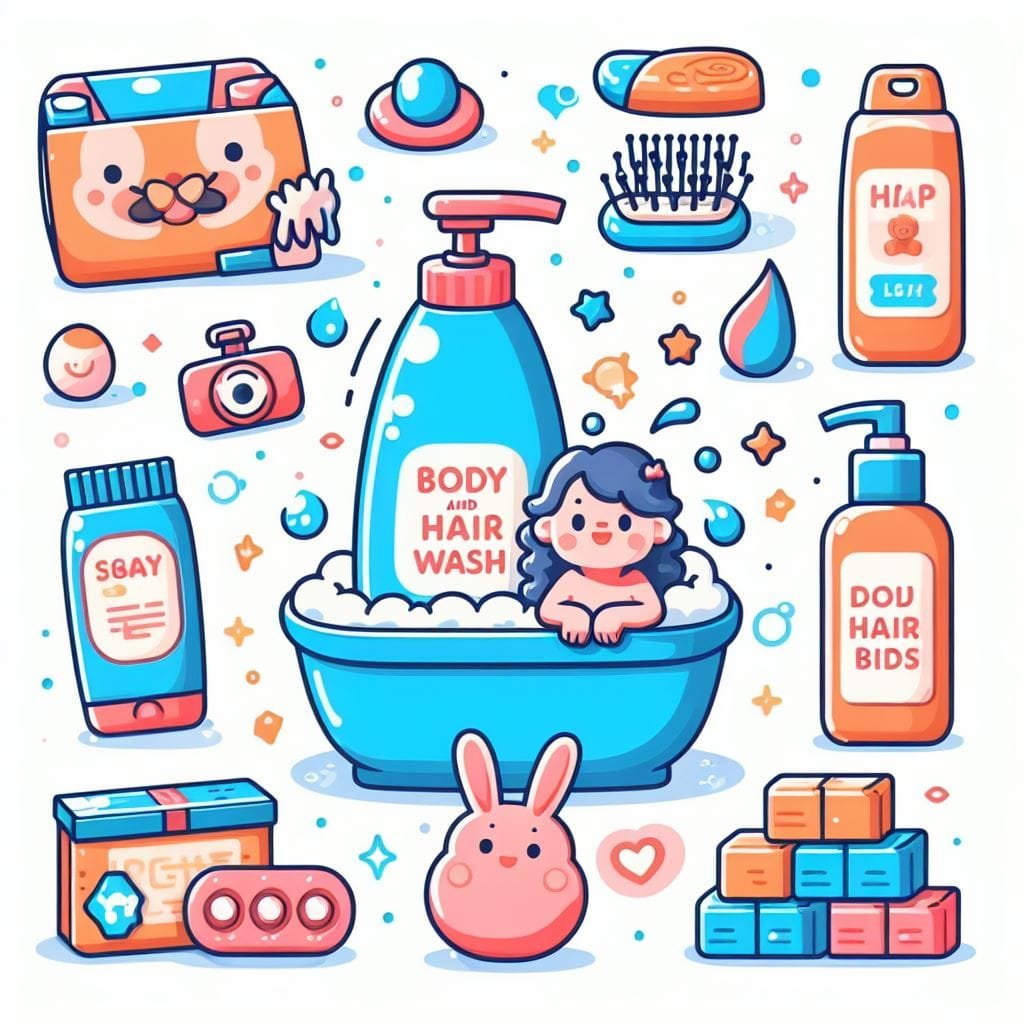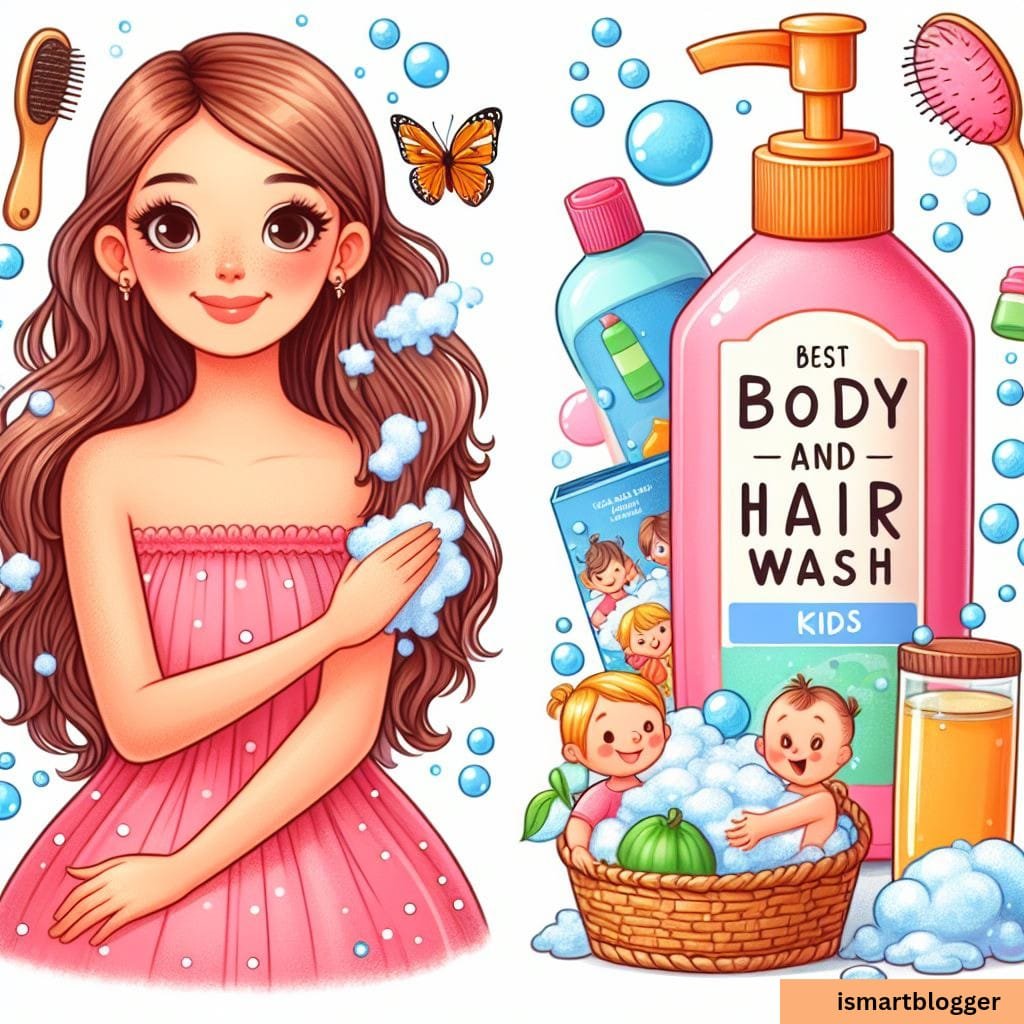Introduction
Proper hygiene is of utmost importance when it comes to the well-being of children. As they grow and explore their surroundings, they come into contact with various bacteria, dirt, and other impurities that can negatively impact their health.
Maintaining good hygiene practices not only helps to prevent the spread of germs but also promotes healthy skin and hair. One crucial aspect of hygiene for kids is ensuring a thorough body and hair wash routine.
Importance of maintaining proper hygiene for kids
Children have developing immune systems that are more susceptible to illnesses caused by bacteria and viruses. Maintaining proper hygiene reduces the risk of infections such as colds, flu, or gastrointestinal diseases.
By teaching children the importance of regular washing habits from an early age, we instill in them lifelong practices that will protect their health. Furthermore, practicing good hygiene promotes positive self-esteem in children.
When they feel clean and fresh, it enhances their confidence level in social interactions and boosts their overall well-being. Moreover, incorporating hygiene habits into a child’s routine teaches them about personal responsibility and self-care, helping them develop healthy habits that will last a lifetime.

Overview of the topic: Best ways for body and hair wash for kids
When it comes to washing a child’s body and hair, there are several factors to consider: the unique characteristics of children’s skin and hair compared to adults’, choosing suitable products based on age-specific needs, as well as implementing effective washing techniques. Children’s skin is thinner compared to adult skin, making it more delicate and sensitive. It requires gentle care to avoid irritation or dryness.
Additionally, children’s hair has its unique characteristics – softer texture and finer strands – which necessitates specific attention when selecting appropriate hair care products. In this article, we will delve into each aspect in detail.
We will explore the differences between adult and children’s skin, discuss the importance of using child-friendly products, and provide age-specific recommendations for body and hair-washing techniques. By understanding these best practices, we can ensure that children receive the most effective and gentle care possible.
Understanding Kids’ Skin and Hair
Difference between adult and children’s skin
When it comes to the delicate nature of children’s skin, there are notable distinctions from that of adults. Firstly, children have thinner skin compared to adults. This thinness makes their skin more susceptible to damage and irritation.
Parents need to be mindful of this fragility when choosing products for their child’s body and hair wash. Furthermore, children’s skin is generally more delicate than adult skin.
Their epidermis, the outermost layer of the skin, has not fully matured yet, making it more vulnerable to external factors such as harsh chemicals, allergens, and environmental pollutants. Due to its increased sensitivity, proper care must be taken when selecting cleansers and shampoos specifically designed for kids.
Higher sensitivity to irritants
Children’s skin exhibits a higher sensitivity to irritants compared to adults. This hyper-reactivity can manifest in various ways such as redness, itching, dryness, or even rashes when exposed to certain substances or ingredients commonly found in adult skincare products. Therefore, it becomes imperative for parents and caregivers alike to choose gentle formulations that are specially developed with kids’ unique needs in mind.
It is worth noting that even seemingly harmless ingredients can potentially trigger adverse reactions in young ones. Fragrances are a prime example; while they may be pleasing for adults, they can often cause allergic reactions or discomfort for children due to their heightened sensitivity.
Unique characteristics of children’s hair
Apart from their distinctive skin properties, the hair texture of children also differs notably from that of adults. Children tend to have softer and finer hair due to its relatively lower density compared to fully grown individuals.
The softness of children’s hair stems from its composition – it contains less keratin protein than adult hair does. This feature makes it more prone to breakage and tangling if not treated with proper care.
Additionally, the fineness of their hair strands necessitates the use of mild shampoos and conditioners that are specifically formulated to cleanse gently without stripping away natural oils or causing unnecessary damage. Understanding these unique characteristics of children’s skin and hair is crucial to selecting suitable products that promote cleanliness, while also nurturing their delicate nature.
Choosing the Right Products
Importance of using gentle, child-friendly products
When it comes to selecting body and hair wash products for kids, it is crucial to prioritize their delicate skin and hair needs. Children’s skin is thinner and more sensitive than adults, making them more prone to irritation and allergic reactions.
Therefore, it is essential to choose gentle, child-friendly products that are specifically formulated for their unique requirements. These products typically contain milder ingredients that are less likely to cause any adverse effects on their delicate skin.
Avoiding harsh chemicals and fragrances
Harsh chemicals and fragrances can be particularly irritating to children’s sensitive skin. It is advisable to steer clear of body washes or shampoos that contain ingredients such as sulfates, parabens, or artificial fragrances. Sulfates, like sodium lauryl sulfate (SLS), can strip the natural oils from the skin and hair, leading to dryness or irritation.
Similarly, some synthetic fragrances can trigger allergic reactions in children with sensitive skin. Opting for fragrance-free or naturally scented products can help minimize potential irritations.
Opting for hypoallergenic formulations
Hypoallergenic formulations have become increasingly popular among parents seeking safe options for their children’s skincare routine. These products are specially designed to minimize the risk of causing allergic reactions or sensitivity issues in individuals with even the most delicate skin types.
Hypoallergenic body washes and shampoos typically avoid common allergens like dyes, preservatives, or known irritants. By opting for hypoallergenic options, parents can provide a higher level of assurance that their child’s bath time experience will be free from any unnecessary discomfort.
Considering age-specific needs
Infants: Mild cleansers suitable for delicate skin
For infants, whose skin is exceptionally delicate and prone to dryness, it is essential to choose mild cleansers specifically formulated for their needs. Look for baby washes that are soap-free and contain gentle ingredients such as oatmeal, chamomile, or aloe vera.
These cleansers help maintain the natural moisture balance of the skin while providing a soothing effect. Additionally, it is important to use warm water during bathing and avoid excessive scrubbing to prevent any damage or irritation.
Toddlers: Tear-free shampoos with added moisturizers
Toddlers often have more hair than infants and require gentle yet effective shampoos. Tear-free formulas are highly recommended during this stage as they minimize discomfort in case the product accidentally gets into their eyes.
Look for shampoos that include mild cleansers like coco-glucoside or decyl glucoside and avoid products containing strong surfactants such as SLS. Additionally, choosing shampoos with added moisturizers can help keep their hair soft and manageable.
Older children: Products addressing specific concerns (e.g., dandruff, lice prevention)
As children grow older, they may encounter specific scalp or hair concerns such as dandruff or lice infestations. In such cases, using specialized products to address these issues becomes crucial. Anti-dandruff shampoos containing ingredients like zinc pyrithione or ketoconazole can effectively control flaking and itching associated with dandruff.
When it comes to lice prevention, certain shampoos incorporate natural ingredients like tea tree oil or neem oil known for their repellant properties against lice. By carefully considering age-specific needs and choosing appropriate products free from harsh chemicals and fragrances while prioritizing hypoallergenic options when possible, parents can ensure that their child’s bathing experience is not only safe but also enjoyable.
Body Washing Techniques for Kids
Bathing frequency recommendations based on age
Properly cleansing the body is an essential part of maintaining good hygiene in children. However, the frequency of bathing varies depending on their age and individual needs.
Understanding the appropriate bathing routine for different age groups ensures that children stay clean and healthy without stripping away natural oils that protect their skin. Infants: Until the umbilical cord stump falls off, sponge baths are recommended to prevent it from getting wet.
During this stage, using warm water with a mild cleanser specifically formulated for infants is crucial. Gently wash their face, neck, diaper area, and skin folds, paying close attention to cleanliness in these areas.
Afterward, carefully pat dry with a soft towel to avoid any irritation. Toddlers/Preschoolers: As your child grows older and more active, daily baths or as-needed become more appropriate.
Use lukewarm water and opt for gentle soap or body wash that is designed for young children’s sensitive skin. Take extra care to cleanse areas prone to sweat or dirt accumulation such as armpits and groin.
Ensuring proper cleanliness in these regions helps prevent bacterial growth and maintain overall freshness. Older Children: For older children who are more independent in self-care routines, daily showers are ideal but can be adjusted based on individual needs.
Encourage them to take responsibility for their washing while guiding proper techniques such as lathering with a gentle soap or body wash from head to toe. Teaching them good hygiene habits at this stage sets a foundation for continued self-care into adolescence.
Conclusion
By following appropriate body washing techniques tailored to each age group, parents can ensure that their children maintain optimal hygiene without causing harm to their delicate skin or hair. From sponge baths during infancy to daily showers for older children, the bathing routine evolves as kids grow. It is important to pay attention to using mild cleansers, gentle soaps, and lukewarm water while focusing on areas prone to sweat or dirt accumulation. By instilling these good hygiene practices from an early age, parents can help their children develop a lifelong habit of self-care and cleanliness.





